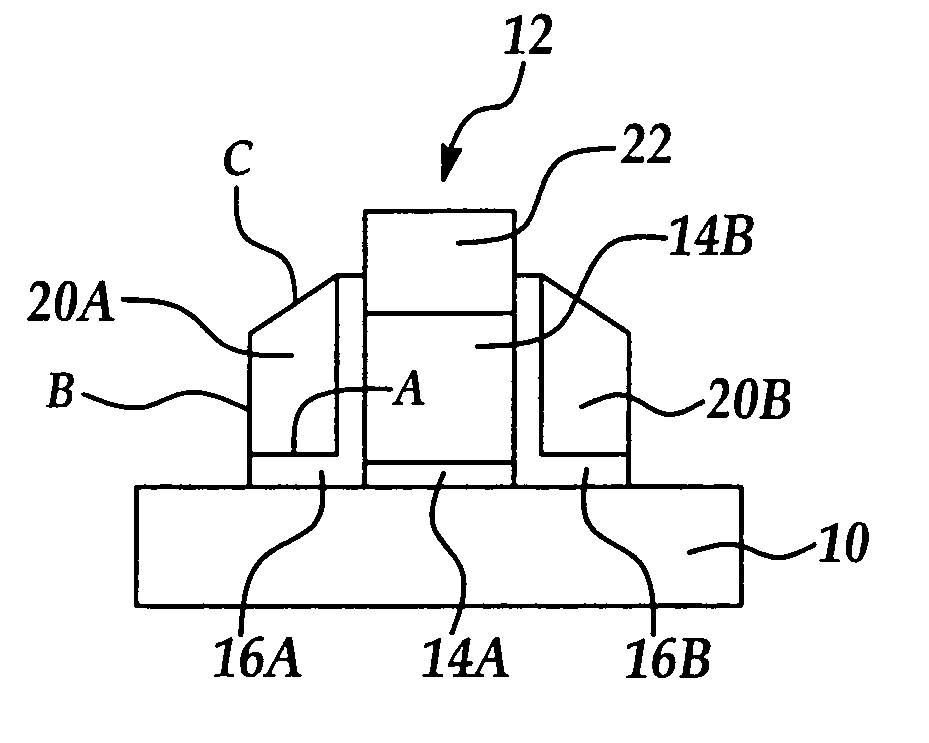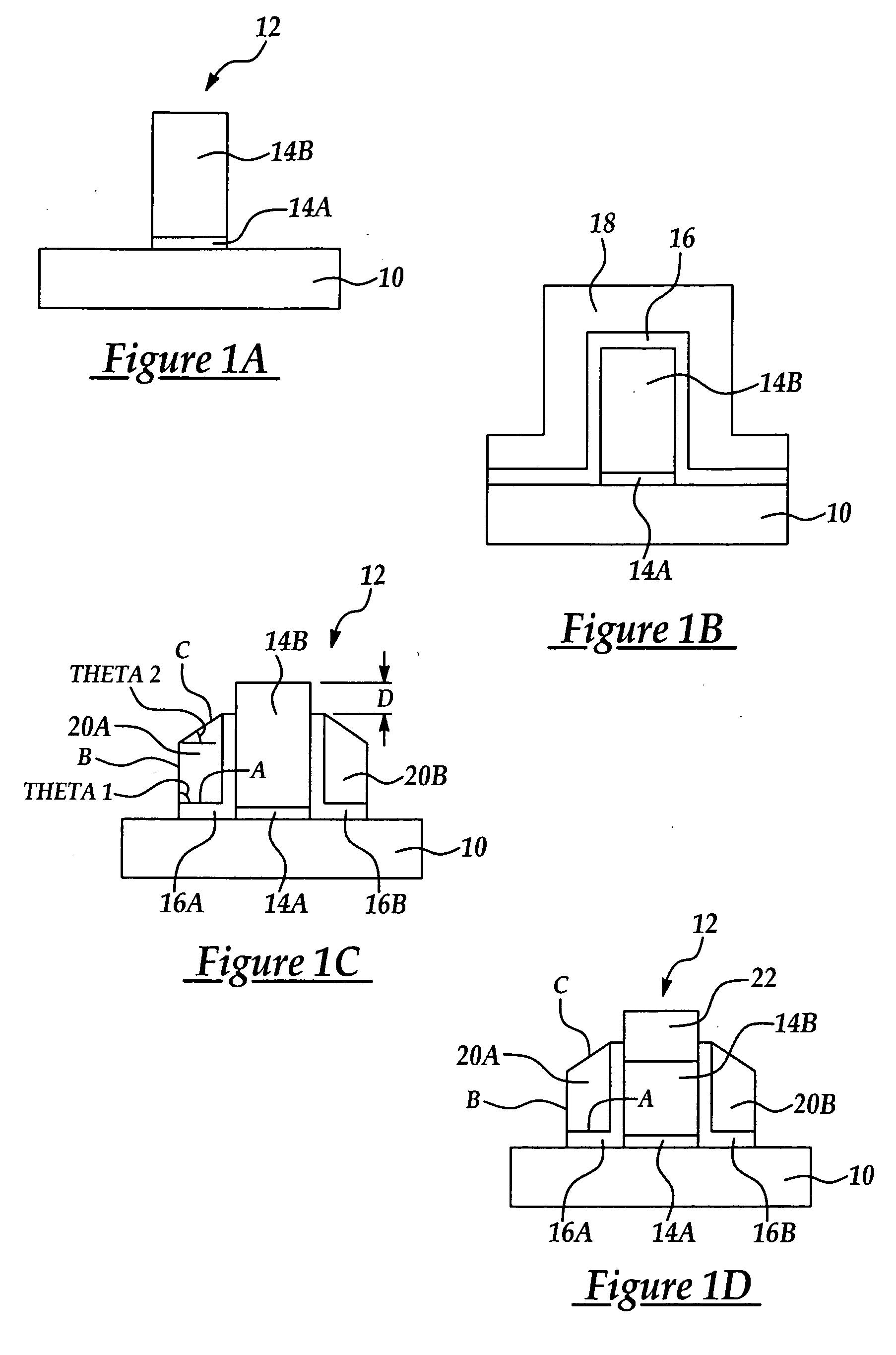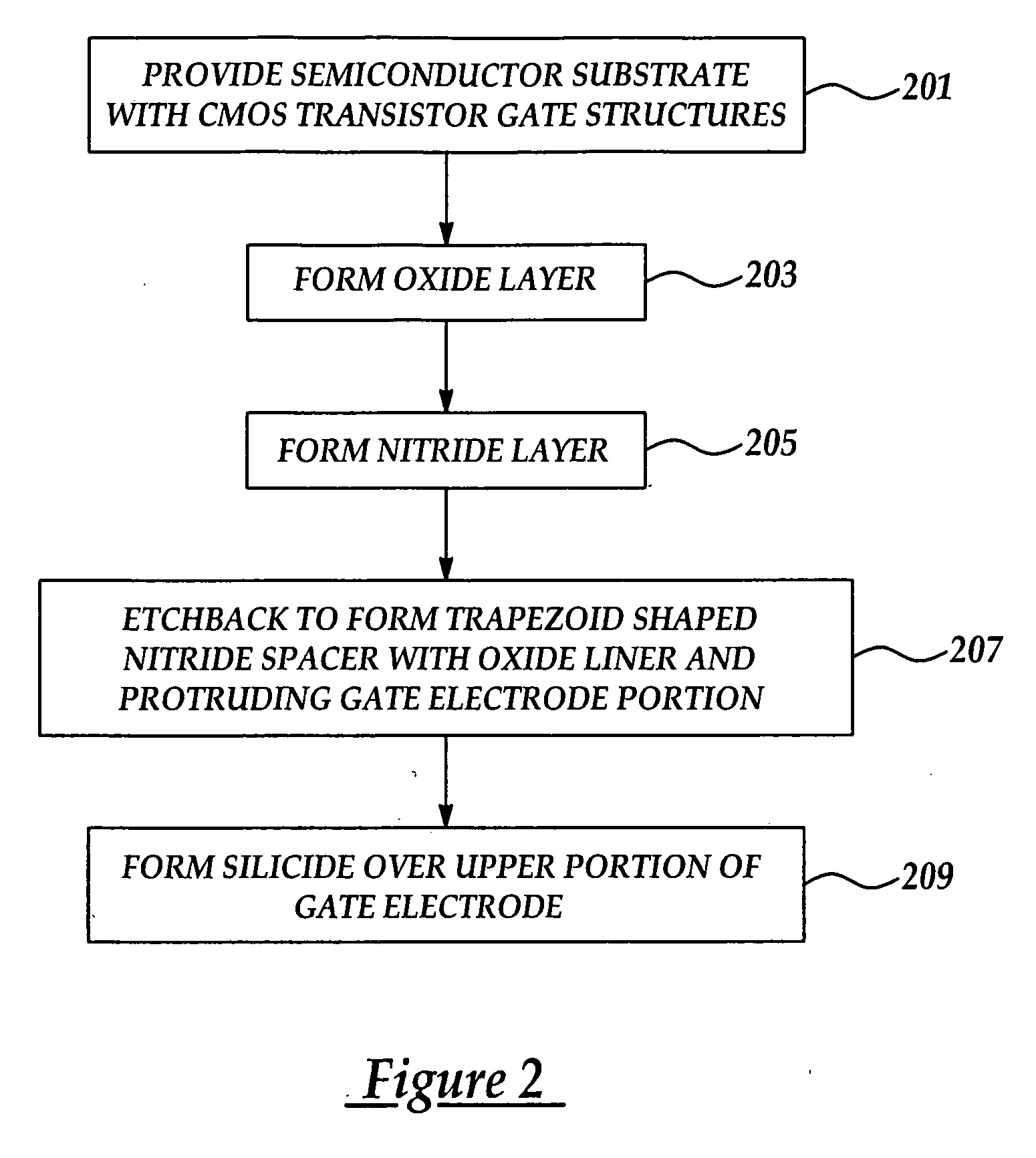Geometrically optimized spacer to improve device performance
- Summary
- Abstract
- Description
- Claims
- Application Information
AI Technical Summary
Benefits of technology
Problems solved by technology
Method used
Image
Examples
Embodiment Construction
[0014] Although the method of the present invention is explained by reference to an exemplary CMOS transistor where the method of the present invention may be advantageously used, it will be appreciated that the method and spacers of the present invention may be used in any CMOS transistor or MOSFET structure where the width of the spacers is resistant to width reduction in subsequent etching processes including dry etching.
[0015] Referring to FIG. 1A is shown an exemplary implementation of the method of the present invention. Shown is a semiconductor substrate 10, having an overlying CMOS gate structure 12, including a gate dielectric portion 14A and overlying gate electrode portion 14B. Gate dielectric portion 14A and overlying gate electrode portion 14B are formed by conventional deposition, lithographic and etching processes. The substrate 10, for example, may include, but is not limited to, silicon, silicon on insulator (SOI), stacked SOI (SSOI), stacked SiGe on insulator (S-S...
PUM
 Login to View More
Login to View More Abstract
Description
Claims
Application Information
 Login to View More
Login to View More - R&D
- Intellectual Property
- Life Sciences
- Materials
- Tech Scout
- Unparalleled Data Quality
- Higher Quality Content
- 60% Fewer Hallucinations
Browse by: Latest US Patents, China's latest patents, Technical Efficacy Thesaurus, Application Domain, Technology Topic, Popular Technical Reports.
© 2025 PatSnap. All rights reserved.Legal|Privacy policy|Modern Slavery Act Transparency Statement|Sitemap|About US| Contact US: help@patsnap.com



